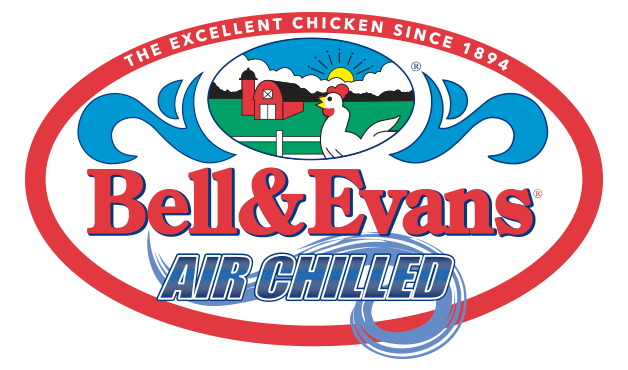A commodity is an interchangeable good where brand name doesn’t matter because one is just like the other. Energy and metals are commodities, but so are livestock and grains. Commodity producers all follow similar practices so they can compete in price and market space. They are profit-driven and care about producing a lot for a little in a short amount of time, adjusting with demand. And they adjust as a group, whether that be in standards or in price.
Are all chickens created equal? In our industry, that’s pretty much the case, but Bell & Evans is the exception. U.S. commodity producers grow chickens bigger, faster, and cheaper to maximize profits. At Bell & Evans, we know that chicken production is about animal husbandry and providing a quality food source, two areas where higher standards should matter, and we make those top priority.
Bigger. Just last month, an industry article came out about broiler (meat) chickens increasing in weight again. Broiler chickens are 60% heavier today at harvest than they were in 1980. That’s because commodity producers have influenced everything from breed to chicken feed to housing conditions to make birds bigger. A bigger bird equals more meat to sell. The article states that the industry average was 6.32 lbs. last year and reached an industry high of 6.48 lbs. this summer due to supply chain disruptions from COVID. Now weights are predicted to continue to rise as commodity producers benefit from a shift in business, from fewer restaurant and food service orders to more retail sales. A larger bird goes a longer way in boneless and prepared items, so there’s the incentive for those commodity producers to sell bigger birds. Unfortunately, oversized chickens will move less and spend their last days in discomfort or pain, and meat quality issues like woody breast and white striping may be present.
Bell & Evans targets a final live weight of 5.6 lbs., meaning a 3 to 4.5 lb. whole chicken in the store. That’s nearly 15% smaller than the industry average today. We don’t adjust our bird weights based on trends or demand. This is both an animal welfare and a quality meat decision. Our chickens are active and fed a quality diet for their own wellbeing, and you taste the difference in the end product.
Faster. That same bigger commodity bird isn’t living any longer than a Bell & Evans chicken. In fact, it’s probably living fewer days, so its growth rate is much faster. Imagine someone trying to force a three-year-old to grow to the weight of an eight-year-old through a poor diet and little exercise. The body can’t handle the unnatural growth, and illness or injury will likely occur.
Cheaper. Commodity producers will minimize costs every way they can to maximize profits on their products. Hexane processing is a cheap way to extract soybean protein for chicken feed, but hexane is a neurotoxin byproduct of gas refining. Soybeans are literally soaked in hexane to separate the oil from the protein. If you believe you are what you eat, then you probably don’t want to eat a chicken that consumed hexane-laced feed. Bell & Evans spends significantly more money to produce 100% of our chicken feed using only safe extruded and expeller-pressed soybean meal plus corn and our own proprietary blend of oregano oil, cinnamon and yucca to support natural gut health.
These are just a few examples of the many ways Bell & Evans produces chickens differently than commodity. 100% of our chickens are raised to premium standards. If you haven’t read my last blog about organic chicken, that should be your next read. Don’t be fooled by spending more money on a premium or organic label coming from a commodity producer. At the end of the day, commodity producers are thinking about their profits and not you and your family.


Bell and Evans chicken taste like chicken used to taste. It’s totally different then what you get from those other brands. I will never go back. It’s also nice to know that the chickens are handled and processed humananly. I’ll gladly pay more for this and a healthier product.
We soooo appreciate the B&E process … product! Don’t know how to dress up the words “best chicken ever”! Those words speak for themseves. We use your chicken more than any other meat. Never a disappointment…